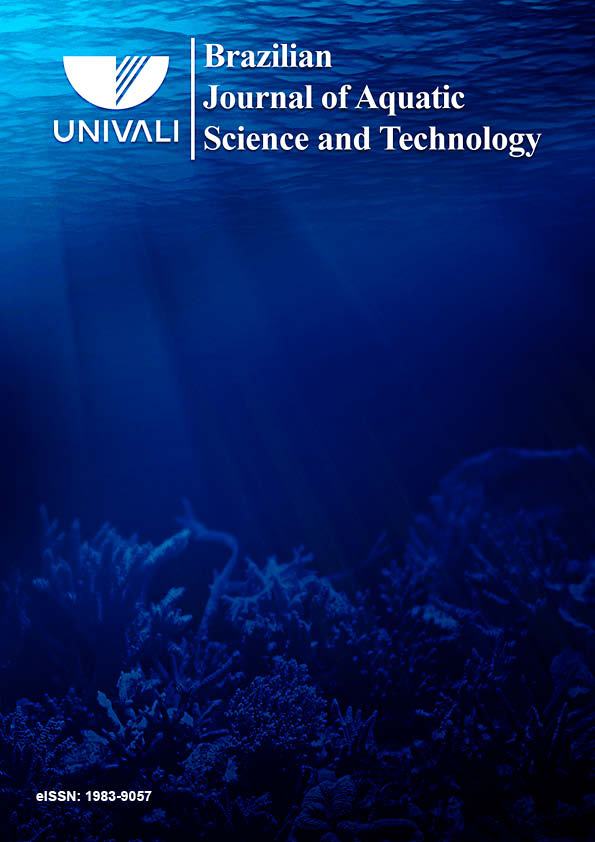Melia azedarach L. Fruit Extract as a potencial candidate in controlling the Neuraeschna Hagen, 1867 (Odonata: Aeshnidae), predominant predators for fish fingerlings
DOI:
https://doi.org/10.14210/bjast.v20n1.4465Resumo
Odonata larvae in fishponds prey on fish fingerlings and decrease the profits from production. With the goal of eliminating these larvae from fishponds, large quantities of pesticides are applied. These products are toxic to fish and have unpredictable effects on the food chain. The objective of this study is to evaluate the effect of the plant extract of fruits of Melia azedarach (CEE) and of methyl parathion (MP) adsorbed in silica in the control of Neuraeschna larvae (Odonata: Aeshnidae). The LC50-18h for CEE was 0.57 mg L-1, and for MP the LC50-12h was 0.17 mg L-1. Two compounds with the highest concentration were isolated and identified from CEE, linoleic acid and melianone. The latter is a triterpene precursor of limonoids, compounds with insecticide properties. The substitution of synthetic pesticides for natural products is a path towards the sustainability of fish farming.
Downloads
Publicado
Edição
Seção
Licença
Autores que publicam nesta revista concordam com os seguintes termos:
- Os Autores mantém os direitos autorais e concedem à revista o direito de primeira publicação, com o trabalho simultaneamente licenciado sob a Creative Commons Attribution License que permitindo o compartilhamento do trabalho com reconhecimento da autoria do trabalho e publicação inicial nesta revista.
- Autores têm autorização para assumir contratos adicionais separadamente, para distribuição não-exclusiva da versão do trabalho publicada nesta revista (ex.: publicar em repositório institucional ou como capítulo de livro), com reconhecimento de autoria e publicação inicial nesta revista.
- Autores têm permissão e são estimulados a publicar e distribuir seu trabalho online (ex.: em repositórios institucionais ou na sua página pessoal) a qualquer ponto antes ou durante o processo editorial, já que isso pode gerar alterações produtivas, bem como aumentar o impacto e a citação do trabalho publicado.

